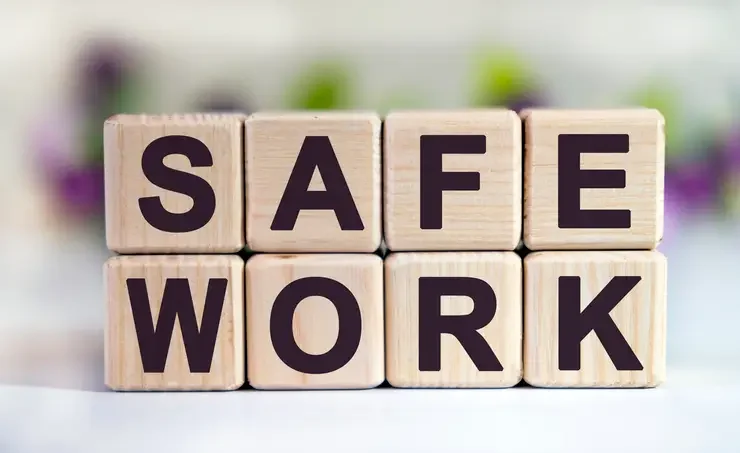23 Safety Abbreviations And Acronyms You Must Know
When it comes to health and safety, its important to convey critical information as quickly as possible. This is why industries use specific safety abbreviations and acronyms to save time and deliver the information effectively.
Both abbreviations and acronyms are short forms of bigger words and phrases. However, an acronym is a word formed from the initial letters of a longer phrase or name, whereas, an abbreviation is a shortened form of a single word or group of words.
Acronyms are pronounced as words themselves, with each letter being pronounced individually, such as OSHA, which is the acronym for Occupational Safety and Health Administration. Abbreviations, on the other hand, consist of initial letters or parts of the original words and are often followed by periods (full stops) or not. It depends on the specific style of convention. For example, “Dr.” is an abbreviation of “Doctor”.
Top Workplace Safety Abbreviations & Acronyms
Figuring out the health and safety world seems like learning a secret language. With lots of abbreviation for safety that is being used every day. This might be confusing and perplexing for individuals who are new to this industry or have little experience in it.

This guide is created to give an idea about abbreviations for safety. If you want to empower yourself by understanding the necessary terms to communicate successfully in this crucial industry. To get a better idea of health and safety linguistics.
Let’s dig in.
1. EHS
The EHS abbreviation is Environment, Health, and Safety. It is a broader term that is used to encompass the management of environmental health and safety within the organization.
2. OSHA
OSHA stands for Occupational Safety and Health Administration. It is the American government agency that is responsible for enforcing workplace health and safety regulations.
3. PPE
PPE stands for Personal Protective Equipment. These are the equipment that is worn to reduce exposure to potential risks. However, PPE includes helmets, gloves, clothing, goggles, masks, safety vest, etc.
4. MSDS/SDS
SDS or MDS stands for Safety Data Sheet or Material Safety Data Sheet. It is a document that provides comprehensive details regarding a chemical product’s qualities, risks, safe handling practices, and emergency response methods.
5. NFPA
NFPA stands for the National Fire Protective Association. It is a group that creates, develops, and publishes codes and standards related to fire safety.
6. HAZMAT
The safety acronym HAZMAT stands for Hazardous Material. This shows the seriousness of material handling. It indicates that if substances or material handled improperly or released into the environment, there are lot of chance of a hazardous situation to someone’s health, safety, or property.
7. LFL
LFL is the abbreviation of lower flammable limit. This safety abbreviation indicates the minimum concentration of flammable gas or vapor in the air that can catch fire.
8. UFL
UFL stands for Upper Flammable Limit. It shows the maximum chances of flammable gas in the air that can catch fire easily. This sign indicates that a vapor in the air can ignite if an ignition source is present.
9. HVAC
HVAC stands for Heating, Ventilation, and Air Conditioning. This safety acronym refers to the system that controls the air quality and temperature inside a building.
10. HSE
HSE stands for Health, Safety, and Environment. It is a department within a company that is responsible for promoting and guaranteeing employee safety as well as environmental protection.
11. IDLH
IDLH stands for Immediately Dangerous to Life or Health. This safety acronym refers to the atmospheric conditions that are immediately dangerous to life or health, such as excessive concentrations of poisonous gases.
12. COSHH
COSHH stands for control of substances hazardous to health. However, in this employers need to take action to safeguard employees from dangerous substances at work under this safety rule from the UK.
13. LOTO
LOTO stands for lockout and tagout. It is a safety procedure used to ensure that machinery or equipment is properly shut down, de-energized, and locked out to prevent accidental startup during maintenance or servicing.
14. NFPA
NFPA stands for National Fire Protection Association. This is an organization that establishes guidelines to install electrical systems and codes for safe design in order to prevent fire
15. CPR
CPR stands for Cardiopulmonary Resuscitation. It is a life-saving method used in dire situations to keep the brain’s blood flow and oxygen supply intact.
16. AED
In health and safety, AED stands for Automated External Defibrillator. It is a portable device that is used to give electrical shocks to the heart in order to restore normal heart rhythm during cardiac arrest.
17. H2O2
H202 stands for Hydrogen Peroxide. It is a chemical substance that is frequently applied in many industrial settings as a disinfectant.
18. SCBA
SCBA stands for Self-Contained Breathing apparatus. It is a device that is worn by firefighters and others in order to rescue workers to supply breathing air in dangerous situations.
19. RPE
RPE stands for Respiratory Protective Equipment. It refers to specialized gear or masks designed to protect individuals from inhaling hazardous substances or airborne contaminants in the workplace.
20. LEL
LEL represents Lower Explosive Limit. It signifies the minimum concentration level at which a flammable gas or vapor becomes too lean to ignite, indicating the potential for an explosive hazard.
21. BBS
BBS is an abbreviation for Behavior-Based Safety. This approach centers on the analysis and modification of employee behaviors as a means to reduce workplace accidents and incidents.
22. PSM
PSM stands for Process Safety Management. It encompasses an extensive set of OSHA regulations meticulously designed to prevent catastrophic incidents associated with highly hazardous chemicals within industrial processes.
23. JSA
JSA is stands for Job Safety Analysis. It is a structured process involving the breakdown of job tasks into individual steps. This process is utilized to assess potential risks associated with each step, contributing to enhanced workplace safety.
Learn More About Safety At Workplace
There are lots of safety abbreviations and acronyms that are often used in safety documents, signage, reports, and communication to convey important safety instructions, warnings, or precautions. However, these safety acronyms are necessary to maintain a safe and healthy work environment and ensure the well-being of individuals in different industries. It is crucial to determine their meanings and use them appropriately in a relevant context.
To learn more about the safety, it is important to enroll in OSHA trainings. Courses like OSHA 10-Hour construction and OSHA 30-Hour construction can enable both employers and workers to foster safe and secure work environments.





